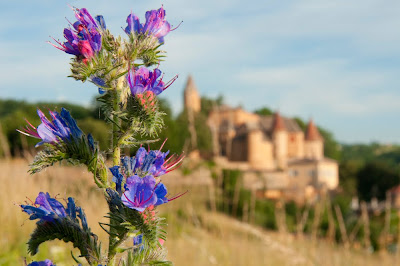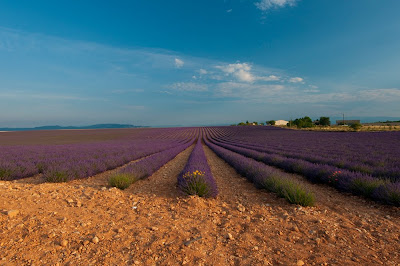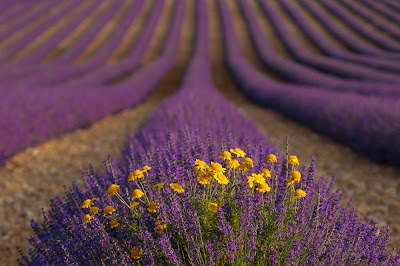If you follow your pets around the house and outside, they will lead you to your next
memorable portrait. Always listen to your animals and take what they give you - it beats a posed shot any day. Whether it's natural light portraits, studio style portraits or outdoor portraits, find or create beautiful light and photograph your animals being themselves. Keeping it simple is sometimes the best idea.
Photos of animals sleeping make wonderful portraits. I don't know any dog or cat that does not like to take a nap. If they have a favorite chair, couch, blanket, etc., position it in a room that has good light. A nice big window with diffused light at a 45-degree angle will illuminate your pet beautifully. Remember you want a room filled with beautiful light not direct sunlight. Patience is key, so keep your camera on hand and when your pet finally takes a nap, seize the moment. A splash of color can make a portrait pop. If you don't have colorful furniture, you can place a colorful blanket on top. My dog, Gracie, loves her afternoon siesta. I photographed her from a slightly high angle looking down so I could show her face being framed between her two paws and to accentuate the long, elegant lines of her nose and paws.

My cat, Murphy, likes to hang out in the bathtub. I don't know if it's because it's cooler in the tub or if it's because it's one of the few places Gracie doesn't hassle him ... maybe it's a little bit of both. Either way he loves the tub and looks so cute in there. Cats are always hanging out in unique places. Photograph your cat in their favorite spot. Bathrooms often have great light and a white tub will provide even more light. Many cats like to sit inside sinks. That is another great spot for a portrait. Get your pet to look at the camera, focus on the eyes, make it personal, and capture their personality. Make sure you illuminate the face with diffused light - that will bring out detail, color and give spark/life to the eyes. It will make all the difference in the world. Positioning your main light source at a 45-degree angle is a good start and will give you flattering results.

My cat, Mister, is a sun worshiper. He loves to bask in the sun. My kitchen gets bright afternoon sun and Mister is always there. Direct sunlight is not flattering light, but it will give you interesting shadows and contrasts. I love Mister's "three legged shadow" and face shadow. I also love the interplay of light and shadow on the tile. The strong contrast makes a visual impact and the window light provides very cool framing. Underexpose by 1 or 2 stops to make the shadows darker or play around with the exposure until you get the look you want. I stood on a chair and shot down so I could take in the whole scene. My cat "gave me this shot,"- thank goodness I was paying attention! Stand on a chair or ladder for unique perspectives and use the environment and shadows creatively to tell your story.
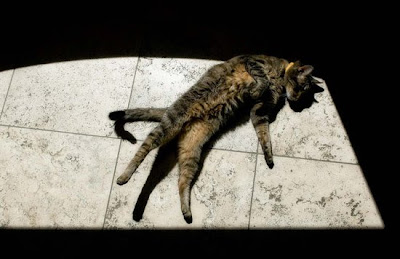
Next time you walk your dog, take your camera and be on the lookout for neat shadows. Shadows are longer late in the day or early in the morning when the sun is low in the sky. I took this picture of my dog, Friday, and me in the middle of the street. The light was behind us and I loved the way it illuminated Friday. Since it was late in the day, the light was warm and the shadows long. It was great. I showed just a portion of Friday's head in the lower portion of the frame to make it personal and add some color and fur. This is one of my favorite and last photos I took of Friday. She loved to go for walks. It will always have special meaning for me because it shows the bond we had and our daily ritual. She passed away a few weeks ago. She was 15 1/2 years old. I miss her dearly and I miss our walks. Try to capture the special relationship between you and your pet. Take pictures EVERY chance you get. They are ALL special. When taking shadow shots like this, underexpose by 1 stop or more to make the shadows darker and more defined. You can also enhance or give your image a boost with Levels and Curves adjustment in
PhotoShop. It's all part of the workflow and the creative process. I added a dark vignette around the edges to emphasize the shadows.
PhotoShop. It's all part of the workflow and the creative process. I added a dark vignette around the edges to emphasize the shadows.
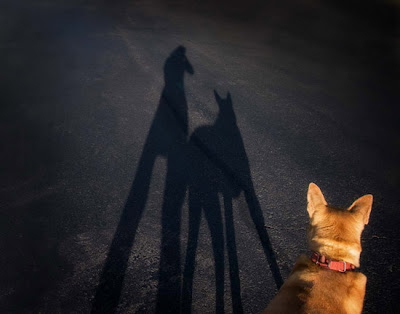
Take cues from your pets and capture those everyday moments. They end up being the most memorable and special portraits ... and always photograph what you love.
Jill Flynn
www.visualharmonyphotography.com
Jill teaches the following courses:
Pet Photography
Photography Adventure Course 2
Jill Flynn
www.visualharmonyphotography.com
Jill teaches the following courses:
Pet Photography
Photography Adventure Course 2

